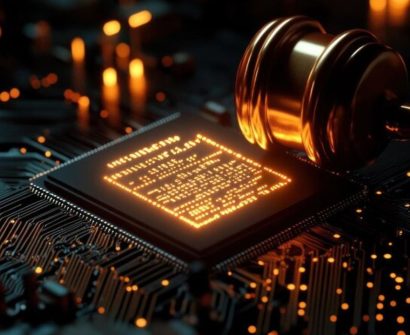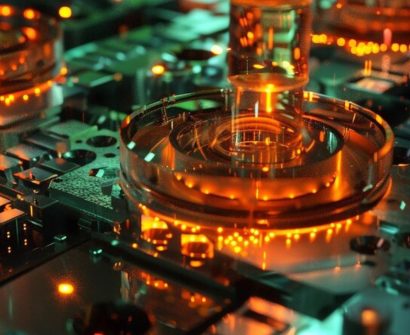What is an Arithmetic Logic Units? Understanding ALU Basics and Functions

An Arithmetic Logic Units (ALU) is a crucial digital component found at the core of most computer processors. It is responsible for performing arithmetic and logical operations, enabling the Central Processing Unit (CPU) to carry out basic calculations and make decisions, which are essential for running any software or processing data. This blog post will explore what an ALU is, its main functions, and why it is integral to modern computing.
What is an Arithmetic Logic Units (ALU)?
The ALU is a digital circuit within the CPU that performs arithmetic and logical operations. Think of it as the calculator within your computer, handling operations that range from basic addition to complex logical evaluations. The ALU acts as the “brain” of the CPU, where data processing takes place and the majority of calculations required by applications are executed.
Basic Functions of an ALU
The ALU operates by receiving two sets of input data and performing a variety of operations based on the control signals it receives. Here are the core functions that an ALU typically performs:
- Arithmetic Operations
- The ALU performs basic arithmetic functions like addition, subtraction, multiplication, and division. These operations are fundamental in almost all types of computing tasks, from simple math to complex algorithms.
- Logical Operations
- Logical operations help the CPU make decisions based on specific conditions. Common logical functions include AND, OR, NOT, and XOR, which play a vital role in conditional processing.
- Shift Operations
- Shift operations move bits to the left or right within a binary number. These operations are useful in tasks that require data manipulation and optimization.
- Comparison Operations
- ALUs can compare two values to determine whether they are equal, greater than, or less than each other. This function is essential for branching and decision-making within software.
How Does an ALU Work?
The ALU receives two main types of inputs:
- Data inputs: Typically, two binary values (operands) that the ALU will operate on.
- Control signals: These signals determine which operation (arithmetic, logical, etc.) the ALU should perform on the given data inputs.
Once the ALU performs the designated operation, it sends the result to other parts of the CPU or stores it in a register, depending on the specific function. The CPU then uses this result to execute further operations or to complete a command in a software program.
Why is the ALU Essential in CPUs and Digital Circuits?
The ALU is an essential part of a computer system due to its ability to perform basic operations that are the foundation of nearly every computational task. Here’s why the ALU is so vital:
- Processing Speed
- ALUs are designed to handle millions of operations per second, significantly increasing the processing speed of a computer. Faster ALUs mean quicker execution of commands, which is crucial for high-performance applications.
- Efficiency in Data Handling
- By performing calculations and logical operations internally, the ALU allows the CPU to manage data more efficiently, saving time and processing power.
- Enabling Complex Operations
- The ALU’s ability to perform logical and comparison operations supports complex decision-making processes within the CPU, enabling more sophisticated computing tasks.
- Versatility Across Applications
- The ALU’s role in processing arithmetic and logical instructions makes it applicable across various digital circuits, including microcontrollers, embedded systems, and modern CPUs.
Types of ALUs
- Simple ALU
- A simple ALU may perform only basic arithmetic functions, like addition and subtraction. This type is common in microcontrollers and low-power embedded systems.
- Complex ALU
- Complex ALUs can handle more sophisticated operations, including floating-point calculations, making them suitable for high-performance CPUs in computers and servers.
- Vector ALU
- Vector ALUs are designed to handle multiple data points simultaneously, commonly found in GPUs (Graphics Processing Units) and used for parallel processing in multimedia and AI applications.
ALU in Digital Circuit Design
In digital circuit design, ALUs are often part of the data path, a series of components that execute and manipulate data. Alongside registers, multiplexers, and control units, ALUs help build datapath units that perform operations within a system. For example, in embedded systems, ALUs provide critical processing power while conserving energy by minimizing unnecessary computations.
Conclusion
The Arithmetic Logic Units (ALU) is the computational backbone of any CPU, handling everything from basic math to complex logical operations that make modern computing possible. With its unique ability to perform a wide range of operations at high speed, the ALU is a cornerstone in digital circuits, embedded systems, and advanced computing applications. Understanding the ALU’s structure and function is fundamental for anyone studying computer engineering or working in fields related to digital design.
By grasping the essential role of the ALU, you gain insight into how computers process information, perform tasks, and support the complex software we use daily.
Also Read : fpga architecture in vlsi
To know more about VLSI Course , SuccessBridge VLSI training institute. You can begin your VLSI career by enrolling in the placement-assisted live courses available at SuccessBridge We offer various VLSI online courses. We offer VLSI Physical Design course, Design Verification course, DFT Training , Chip design course many more. Explore VLSI Courses From The Leaders In VLSI Training






